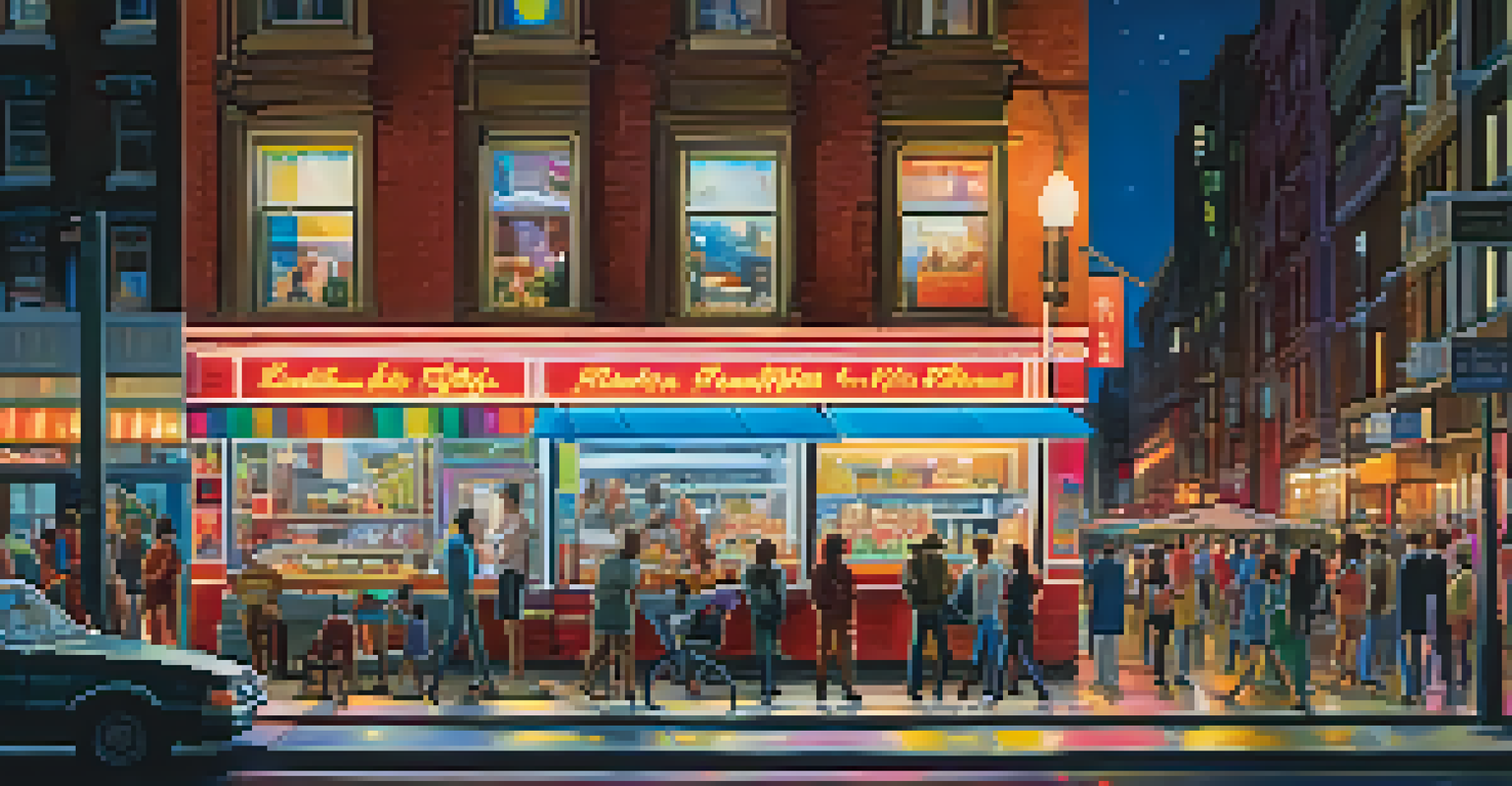The Balance of Humor and Drama in Effective Filmmaking

Understanding Humor and Drama in Filmmaking
Humor and drama are two powerful storytelling tools in filmmaking. Each serves a distinct purpose, yet they often coexist to create a richer narrative. Humor can lighten the mood, making characters more relatable, while drama pulls at our heartstrings, creating emotional depth.
The best comedy is always a little bit sad, and the best drama is always a little bit funny.
When combined effectively, these elements can elevate a film from good to unforgettable. Think of classic films like 'The Princess Bride' where witty banter meets genuine emotional moments. This balance is what keeps audiences intrigued and engaged throughout the story.
Filmmakers must understand the nuances of both humor and drama. A well-timed joke can provide relief after a tense scene, while a dramatic moment can ground a light-hearted film. Recognizing how these elements interact is crucial for a cohesive viewing experience.
The Role of Timing in Blending Humor and Drama
Timing is everything in film, especially when it comes to humor and drama. The placement of a joke can either enhance or diminish a dramatic moment. For instance, a perfectly timed punchline can relieve tension, allowing the audience to breathe before diving back into the emotional intensity.

Consider the film 'Life is Beautiful,' where humor is used strategically to shield characters from the harsh realities around them. The film alternates between lighthearted scenes and poignant moments, showcasing how timing can profoundly affect the viewer's experience.
Humor Enhances Narrative Depth
Combining humor and drama enriches storytelling by making characters relatable and evoking emotional responses.
Filmmakers must master pacing to maintain this balance. If humor comes too soon or too late, it risks undermining the drama. Thus, understanding the rhythm of the story is essential for achieving that delicate equilibrium.
Creating Relatable Characters Through Humor
Humor can serve as a powerful tool for character development. When characters exhibit a sense of humor, they become more relatable and human. Audiences are often drawn to characters who can make them laugh, even in challenging situations.
Humor is just another defense against the universe.
For example, the character of Tony Stark in the 'Iron Man' series uses his wit to navigate the complexities of heroism. His humor not only entertains but also reveals his vulnerabilities, making him a multifaceted character.
By infusing humor into character interactions, filmmakers can foster deeper connections between the audience and the story. This relatability can make dramatic moments hit harder, as viewers are already invested in the characters’ journeys.
Using Humor to Address Serious Themes
Humor can be an effective way to tackle serious subjects without alienating the audience. By approaching heavy themes with a light touch, filmmakers can encourage viewers to engage in difficult conversations. This approach can help viewers process complex emotions in a more accessible way.
Take 'Dead Poets Society,' for instance. The film explores themes of individuality and the pressures of conformity, but it balances its gravity with moments of levity. These humorous interludes provide relief and make the serious messages more palatable.
Timing is Key in Film Balance
The effective placement of humor within dramatic moments can enhance emotional impact and viewer engagement.
Filmmakers who leverage humor to explore serious topics can create compelling narratives that resonate deeply. This balance allows for a richer storytelling experience, blending laughter with reflection.
Cultivating Emotional Resonance with Dramatic Moments
Dramatic moments are essential for creating emotional resonance in films. They serve to anchor the narrative and remind viewers of the stakes involved. Without these poignant scenes, a film can feel flat, lacking the emotional depth that keeps audiences invested.
Consider 'The Pursuit of Happyness,' where the protagonist's struggles are portrayed with both humor and heartache. The dramatic scenes highlight his challenges, making the eventual triumph even more impactful.
By weaving dramatic elements into the narrative, filmmakers can evoke powerful emotions. This emotional resonance not only enhances the viewing experience but also leaves a lasting impression on the audience.
Finding the Right Balance for Your Film
Every film is unique, and finding the right balance of humor and drama is a nuanced process. Filmmakers must consider the story's themes, tone, and target audience when deciding how much of each element to include. A light-hearted romantic comedy may lean heavily on humor, while a gripping drama might use humor sparingly.
For example, films like 'Little Miss Sunshine' successfully blend humor and drama by portraying a dysfunctional family navigating life's challenges. This balance resonates with audiences, making them both laugh and cry.
Relatable Characters Foster Connection
Infusing humor into character interactions allows audiences to connect more deeply, enhancing the effect of dramatic scenes.
Ultimately, the key to success lies in understanding the story's essence and the emotions the filmmaker wants to evoke. This understanding will guide the integration of humor and drama, ensuring a compelling narrative.
The Impact of Humor and Drama on Audience Engagement
A well-crafted balance of humor and drama can significantly enhance audience engagement. When viewers are emotionally invested, they are more likely to connect with the characters and themes. This connection makes the story more memorable and impactful.
Films that master this balance often lead to discussions and reflections long after the credits roll. Take 'Forrest Gump,' which combines humor and poignant moments to tell a story that resonates on multiple levels.

In an era where audiences are bombarded with content, creating a film that captivates and engages is vital. By skillfully blending humor and drama, filmmakers can craft stories that linger in the minds of viewers, encouraging them to revisit the film time and again.
Conclusion: The Art of Blending Humor and Drama
In the world of filmmaking, the balance of humor and drama is an art form that requires skill and intuition. Each element plays a crucial role in shaping the narrative and influencing audience emotions. When used effectively, humor can provide relief, while drama can evoke empathy, creating a well-rounded viewing experience.
Filmmakers must be attuned to the story's needs, leveraging humor and drama to enhance character development and thematic depth. By understanding the interplay between these elements, they can create films that resonate with audiences on multiple levels.
Ultimately, the successful balance of humor and drama enriches storytelling, making it a vital component of effective filmmaking. As audiences continue to seek deeper connections with stories, the ability to navigate this balance will be increasingly important.